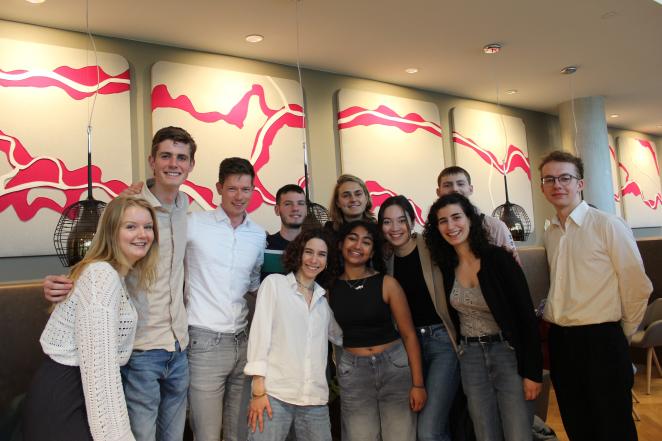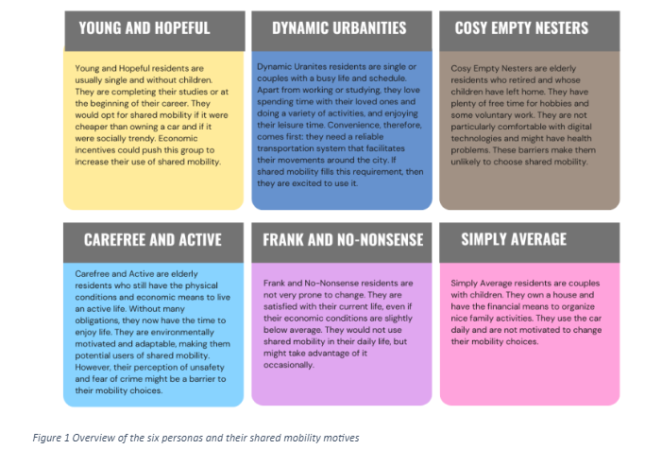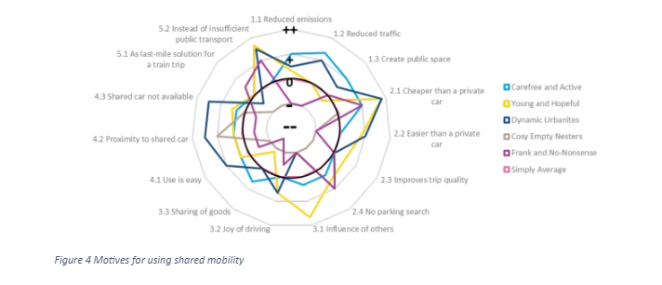Twelve students from Utrecht University‘s bachelor program in Global Sustainability Science conducted a mobility-themed research project for AM, a partner of SHARE-North Squared (SN²), as part of their twelve-week ‘Consultancy Project’

The neighborhood of Lunetten was chosen as the case study, which is also one of the living lab cases for SN² in Utrecht. Area developer AM aims to explore opportunities for shared mobility within their project, aligning with the mobility needs of both new and existing residents of Lunetten.
The students’ research question was: “What models effectively provide shared mobility solutions for low-income households in Lunetten, City of Utrecht?”
What is the character of Lunetten?
The property in Lunetten is set for significant redevelopment, aiming to provide a residential-workspace mix with 75% social housing by the end of the decade.
The target demographic includes the elderly, starters, and couples. The surrounding neighborhood comprises single-family homes and low-rise apartment blocks, with a relatively large share of social housing.
Additionally, Lunetten is home to many students. While the neighborhood has a strong green character, cars dominate the street at the ground level.
Methodology
The students began by conducting desk research on mobility systems and various Dutch shared mobility providers. Additionally, they interviewed individuals within social housing and organized a focus group with residents of Lunetten.
They wrote a report on behalf of these people, providing recommendations for AM and other involved parties in the mobility system.
Below, we will outline the key insights from their research.
Our main takeaways

I. ‘Social housing’ or ‘low-income housing’ is not one target group, but consists of different age groups, lifestyles, and hence mobility needs.
In their advice, the students represent the potential future residents and current residents of Lunetten in six different personas based on the interviews and focus groups.
For each persona, they identified the specific needs for embracing shared mobility and highlighted what motivates them to adopt this option.

II. Take into account possible social exclusion factors of shared mobility concerning the different personas
Some groups could potentially feel excluded from shared mobility due to multiple barriers. These barriers range from ‘app understanding difficulty’ and ‘fear of insufficient charging/fueling’ for the elderly/Cosy Empty Nesters and ‘cost-saving preference’ for the Young and Hopeful as well as the Carefree and Active.
The figure suggests that the Cosy Empty Nesters experience the most potential exclusion factors when it comes to shared mobility.

III. Emphasize and communicate the strengths and value of shared mobility early in the planning phase of shared mobility
The figure on ‘motives for using shared mobility’ reveals the incentives among different groups.
The Young and Hopeful citizens are influenced by peer encouragement. The Carefree and Active group, alongside the Dynamic Urbanites, are motivated by environmental factors. The latter group also values convenience highly.
The Cosy Empty Nesters prioritize proximity to home for mobility options. While the Frank and No-nonsense stressed that it is valuable that shared cars have dedicated parking spots available so that they do not have to search for a parking spot.
Lastly, despite shared mobility’s potential for first and last-mile solutions, the study found that only a small portion of public transport users utilize it for the last mile, suggesting room for improvement in positioning.
IV. The current shared mobility landscape is less inclusive for lower-income people who wish to commute to work by car daily
Shared mobility is less appealing to people who commute to work by car daily. A trend predominantly observed with the Frank and No-Nonsense and the Simply Average.
The main barriers are the uncertainty about the availability of vehicles for a daily commute, particularly for those working at industrial sites lacking public transportation connections. Besides, station-based shared mobility is impractical, as it is too expensive for these groups to rent the car for an entire workday, as they continue to pay until returning the vehicle to its hub.
V. Prioritize early adopters of shared mobility, but don’t neglect late adopters.
The students identified the Carefree and Active, the Young and Hopeful, and the Dynamic Urbanites as the early adopters. Alongside other motivations, these groups exhibit lower rates of car ownership, making shared mobility a convenient addition to their existing transportation habits.
The Cosy Empty Nesters, the Frank and No-Nonsense, and the Simply Average were categorized as late adopters. The Frank and No-Nonsense view private car ownership as a status symbol. They emphasized that they need the alternative sharing option to be more popularized before they adopt this. Encouraging their adoption of shared mobility could be achieved by highlighting the benefits that resonate with these groups.
Want to know more about this research? Feel free to reach out to Malika van de Weerd (AM, SN² partner) via Malika.vande.weerd@am.nl
